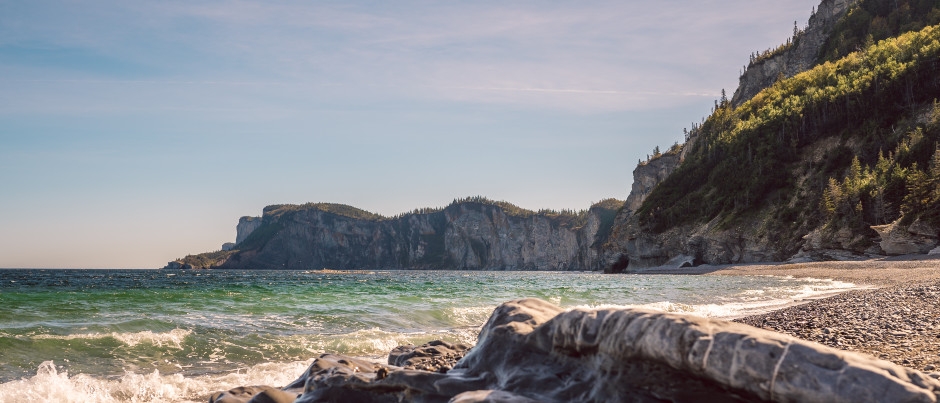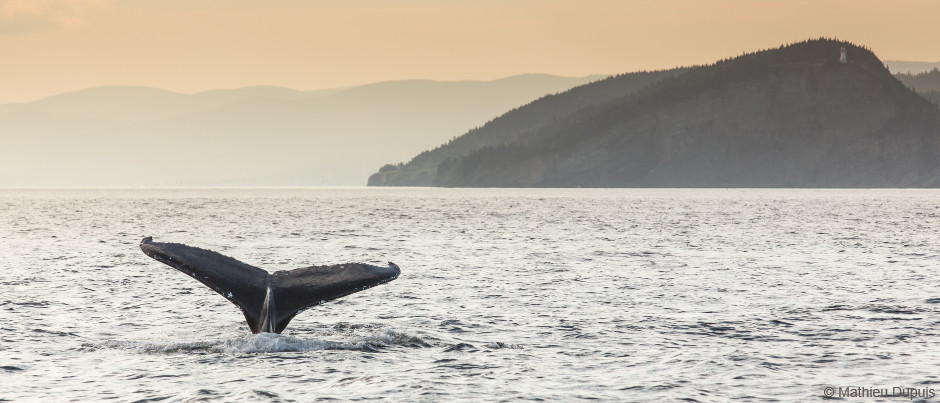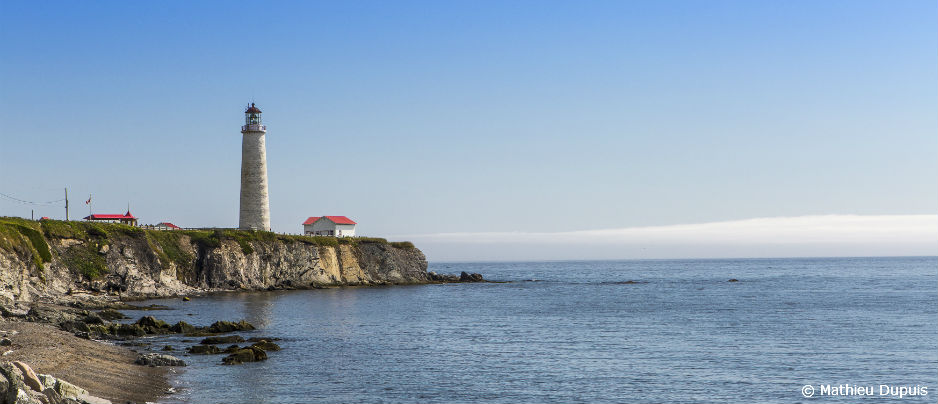The Québec maritime Blog

-
Forillon National Park
Dany Vachon/Tourisme Gaspésie
Discover Gaspé at Land’s End
Follow the Guide!
As a child, I was very familiar with the four cardinal points on a compass. I lived in Gaspé-Nord (a former electoral district that roughly corresponds to what is now Haute-Gaspésie). In front of our house and across the sea was Côte-Nord; behind our house and two hours away by car was Gaspé-Sud (now known as the Chaleur Bay area). This made things simple: since north was out the front and south out the back, then west was on the left and east on the right. This realization led to a geographical conviction: when I’m by the sea, I’m facing north! Of course, that was before I visited the town of Gaspé…
In Gaspé, the sea is everywhere! Known as Gespeg to the Mi’gmaq Nation, which means “land’s end,” Gaspé is located at the tip of the immense Gaspé Peninsula. So, if for you, a vacation means travelling towards multiple horizons and a complete change of scenery, then you’ll want to visit Gaspé! I lost my bearings here and I’m all the better for it!
Surrounded by water

Gaspé is a feast for the eyes with many surprises in store for you, starting with renowned Forillon National Park. The tip of the park is a long headland surrounded by cliffs: it juts out into the Gulf of St. Lawrence for 8 km (5 mi.), ending at Cap-Gaspé at the eastern extremity of the peninsula and pointing towards the island of Newfoundland.
The south side of the park borders Gaspé Bay, an impressive indentation in the coastline that is 40 km (25 mi.) deep and 9 km (6 mi.) wide and is regularly visited by seals and whales. Three majestic Atlantic salmon rivers flow into the bay: the Darmouth, the York and the Saint-Jean. Their vast estuaries will provide you with views of some of the largest wetlands in Gaspésie, a complex mosaic of salt marshes, swamps, lagoons, channels, barachois and sandspits that change with the tides.
Rich cod banks and the beginning of French America

The Gaspé coastline has been sparking our collective imagination for a long time… and for good reason! From the early 16th century, the immense inland sea that is the Gulf of St. Lawrence was frequented by Basque and Breton whalers. In addition to whales, they found rich banks of cod that changed the course of history by launching the French fisheries off the coast of Newfoundland and the tip of the Gaspé Peninsula. Sailing under the French flag, explorer Jacques Cartier navigated in the wake of these fishermen in search of gold and planted a cross on behalf of King Francis I on Penouille Point, on the shores of Gaspé Bay, in 1534. As local historian Jules Bélanger once remarked: “It’s odd to think that it’s in part due to cod that we speak French here today” [translation].*
These same fishermen are said to be the originators of a special method of drying and salting fish that was later adopted by Jersey merchants under the English regime. “Gaspé Cured” is a trademark that’s still used on the international market, much like the appellation d’origine contrôlée, a certification of authenticity used for wines and other food products in France. You can learn more about the heyday of the cod fishery (and the Jersey monopolies) at the Grande-Grave heritage site in Forillon National Park, a must-see!
Gaspé Harbour: When geography makes history
Two long sandspits, Penouille (1.8 km / 1 mi.) and Sandy Beach (3.2 km / 2 mi.), have created an immense harbour in Gaspé Bay that the Basque named Geizpe: a place of refuge.
In the mid-19th century, Gaspé became a duty-free port following a free trade agreement with the United States. Hundreds of ships anchored in the bay every year and the local population multiplied by 600%, while a dozen consulates from foreign countries managed the new commercial traffic. However, all this activity barely lasted a decade. Following Canadian Confederation in 1867, much of the maritime traffic was redirected to Halifax, in Nova Scotia.
Then came the two world wars. In the fall of 1914, the First Canadian Contingent anchored in Gaspé Bay: it was comprised of 31 transport ships loaded in Québec City with military equipment, horses and 31,200 Canadian soldiers. Once this impressive armada had assembled in the harbour, the largest convoy ever to cross the Atlantic left the Gulf of St. Lawrence for England.
During the Second World War, the town of Gaspé was designated a naval base in order to detect and destroy German U-boats in the St. Lawrence. A huge anti-submarine net was installed across the harbour to protect it from the enemy. To learn more about this area’s military heritage, be sure to visit the Fort Peninsula underground fortifications in Forillon National Park.
There’s lots to see, so plan to take your time…

A small coastal town of 15,000 inhabitants, Gaspé offers everything you need to fall in love with this area, including lots more natural, cultural and heritage attractions. This post is already getting long, but I do want to recommend a few more!
For starters, be sure to visit the Musée de la Gaspésie to discover the history, art, heritage and culture of the region through the museum’s permanent and temporary exhibitions. Did you know that former French president François Mitterand once gave a speech in Gaspé? The museum’s outdoor amphitheatre was named after him. Visit a replica of the cross Jacques Cartier planted and then discover the Birthplace of Canada site, which borders the York River basin, in the heart of the village of Gaspé.

You’ll definitely want to spend some time on Penouille Beach and Sandy Beach, both long stretches of sand where you can relax, birdwatch, swim and soak up the beauty of the surrounding area. Oh, and be sure to book your whale-watching cruise with Croisières Baie de Gaspé! I’ve been lucky enough to see and hear two blue whales in the bay!
Learn more about the original inhabitants of this land at the Micmac Interpretation Site of Gespeg, where you’ll be immersed in the fascinating world of the Mi’gmaq. If you visit Gaspé at the right time of year, you can also enjoy the amazing Festival Musique du Bout du Monde, a world music festival that blends culture and nature. Don’t miss the unforgettable sunrise concert at Cap Bon-Ami!

If you’re a hiking enthusiast, Forillon National Park offers many coastal and forest trails. You can also trek along the famous International Appalachian Trail – Québec, which is 650 km (400 mi.) long and starts (or ends) in Cap-Gaspé. Be sure to also visit the Cap-Gaspé Lighthouse, one of three such towers within town limits. The second, Cap-des-Rosiers, is impossible to miss since it’s the tallest in Canada! And the third, Pointe-à-la-Renommée, is perched on the side of a mountain overlooking the sea in a truly idyllic landscape.
So, circle the dates on your calendar, draw suns in the margins and get ready to soak up everything the town of Gaspé has to offer!
*Source: “Les terres-neuvas, ces marins méconnus,” Monique Durand, Le Soleil, December 31, 2005.

(0) comment